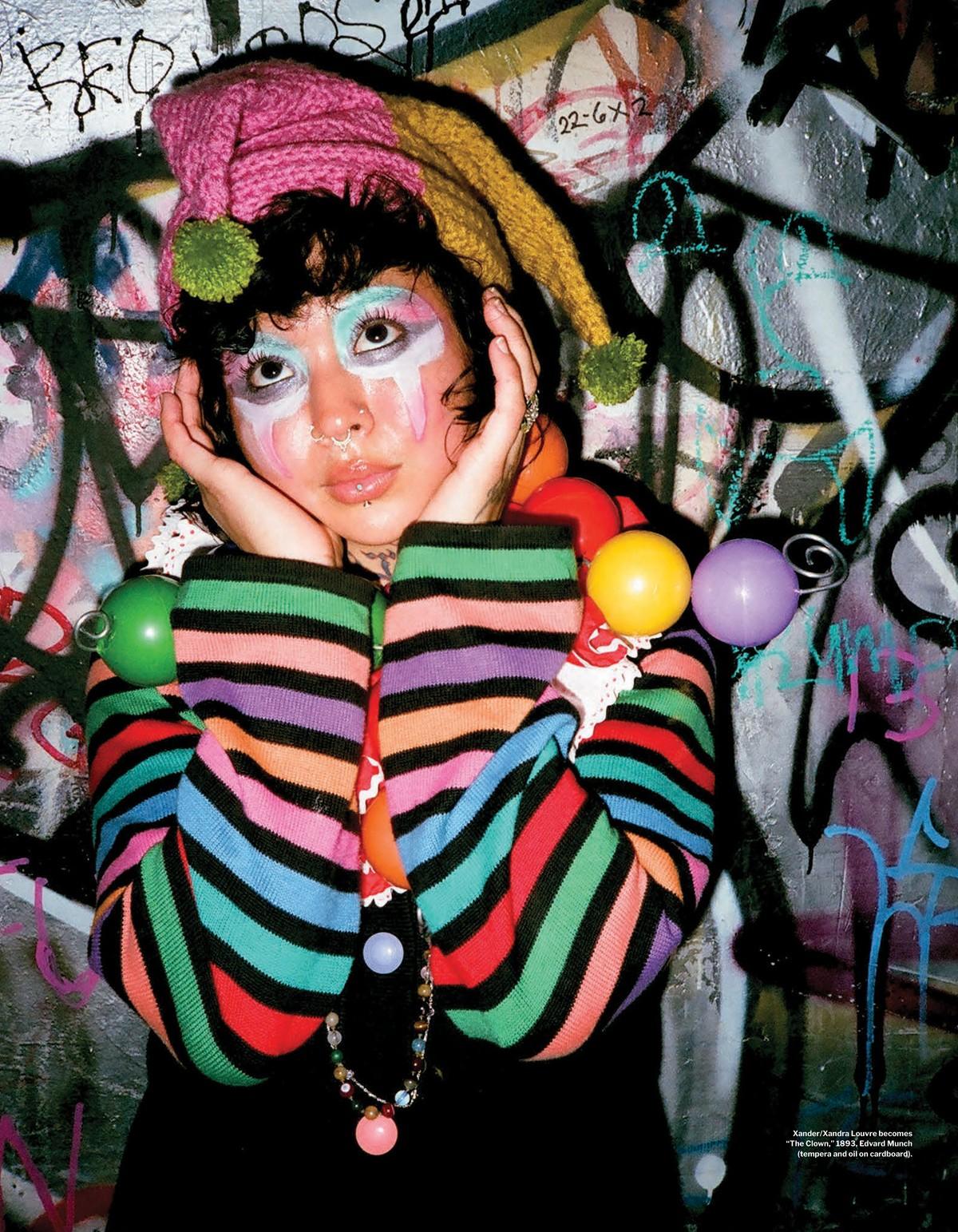Eleganza
THE BIG HA
Clowncore is more than just the latest strange trend in music and fashion—it's a lifestyle.


When I was a kid I had a thing about clowns. My parents would take me to the Ringling Bros, and Barnum & Bailey circus every year and once got me this largeformat souvenir book that I treasured. Inside were two spreads I particularly loved: one of all the clowns in their clown gear, and, a few pages later, one of the clowns without their makeup or getups. In each, their positions were rearranged. I pored over these images, attempting to match the paintless faces with the painted, rapt by the transformation.
The star clown was David Larible, an Italian performer who wore a baggy black-and-white-checkered suit with a bright red vest to match his painted nose. I adored him. The way he’d make a fool of himself and the audience members he dragged into the round stage, the confidence of his pantomime, both bossy and self-effacing. He was, perhaps, my first crush.

